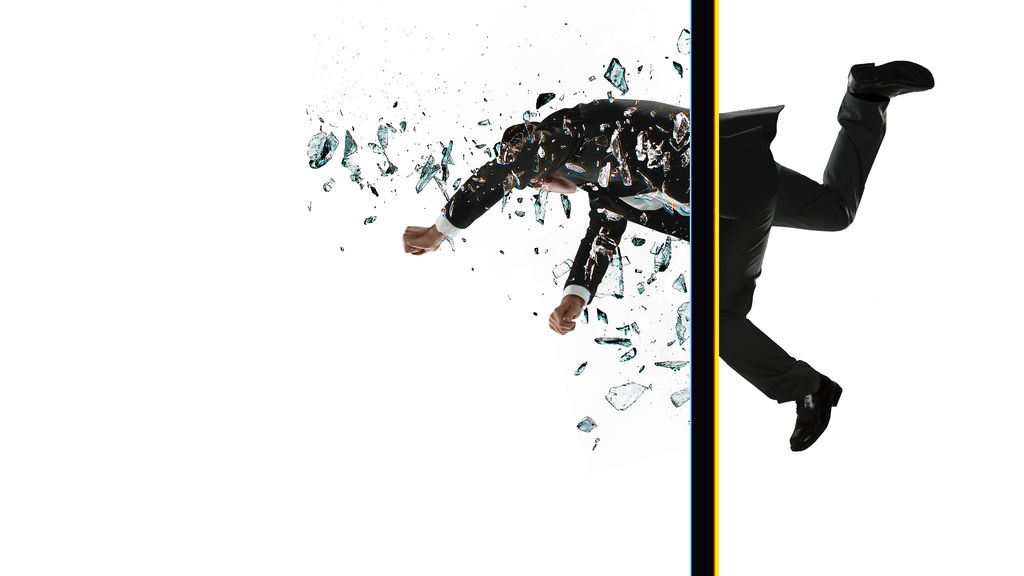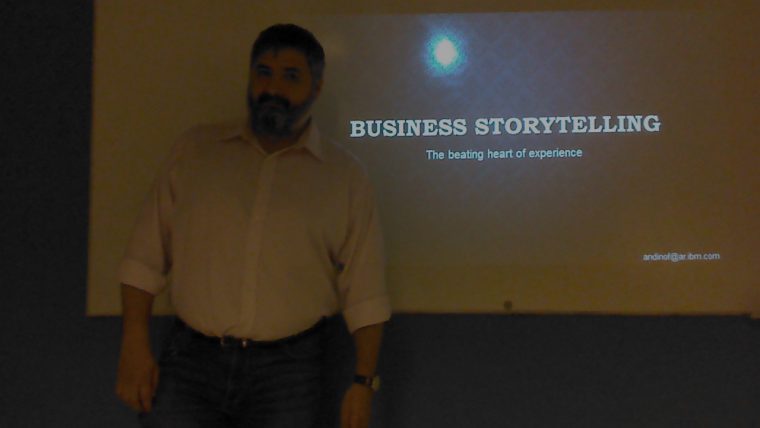
Category Archives: Storytelling

Meditation and Storytelling
Or the use of Stories as Bridges of experiences

Drukpa Kunley, called “the divine madman”
Perhaps one of the most underrated tools for a Mindfulness teacher is the power of Storytelling. Because when one is teaching meditation, one is trying to convey, through technical language something that resist being reduced to language above and beyond the usual resistance.
Let’s take something more socially common: the experience of falling in love.
Now, I don’t know about you, gentle reader, but when I was young, falling in love was this experience which was at the same time ill-defined and omnipresent, specially going into my teen years. On one hand, it seemed to be the expected thing to do: young people FELL IN LOVE in capitals, reshaping their world invariably for the better. On the other hand, the…let’s call them symptoms, were…worrying. Fluttering butterflies? Pulse Racing? Shortness of Breath? Was that a pleasant, life-affirming sensation or a stroke?
But with time and patience, one learns to recognize the signals and that they’re exaggerated for dramatic purposes. The same happens with meditation: its a lot of complex signals and experiences, which lack a common language that helps mediate and articulate them.
There’s a short anecdote about Borges, the great lover of language. He travels to Japan and meets a living Buddha (I.e. someone who was recognized to be enlightened). So Borges, the consummate writer and poet asks him to describe enlightenment and the monk says the worst thing possible to him: he cannot. He can talk about enlightenment with another Buddha, who will understand him…but not with Borges.
This, of course, drives the great master of language mad and is probably one of his greatest regrets into old age. But this points out to a great problem with language: we need some kind of bridge, beyond the structures of syntax and grammar, that allows experience to be shared.
Stories are that bridge.
Think back to your teen years. Where there stories about falling in love? Anecdotes from an elder sibling, jests between friends, little talks? If you were in a school, or in a less than totally dysfunctional family, there probably were.
We lack that kind of everyday storytelling with meditation: we usually approach it in a more formal framework. And I think that this hurts our ability to integrate it. That’s why stories can help bridge that gap, create a way for experience to be communicated. Be it the bizarre antics of Drukpa Kunley, the story on how Ganesh became elephant headed or a more down to earth story on how we began to meditate in response to a situation, I think that Storytelling is the tool that will help more Mindfulness teachers to communicate.
What are your favorite meditation stories?
The (Dark) power of Anti-Stories
The Wormwood Parable

(Now in absinthe form! Wreck the state of Denmark while you wreck yourself!)
Wormwood, wormwood
“Hamlet” Act 3, Scene 2 by William Shakespeare
Those are the words murmured by the tragic prince himself, on Shakespeare’s play, that reach all the way back to the Book of Revelation. But they also appear in both the title and the mouth of Netflix’s great documentary on the death of Frank Olson, a bacteriologist working for the U.S. Army. I do not want to give away the plot, for those who don’t know about it, or the ending. Suffice to say, for me it is a must-see visual feat of storytelling.
There are several reasons for it. One is the editing and composition, which is great. Another is the mix of re-enactments and interviews, which helps to keep the pace brisk. But the main one is that it goes against an Anti-Story.
There are several variants of what an Anti-Story is. Callahan defines it as something that works on a different level than a presented story. For example, the leaders of a company talk about restructuring and the employees start talking among themselves about their fear of layoffs. You need to address it, says Callahan. But that’s not what’s going on in Wormwood.
For another definition, Stevick sees it as a story that ignores plot or structure. That’s closer to what I saw, but let’s try to analyze what happens closer.
Wormwood is essentially the search for the Story of What Happened, one fateful day when Frank Olson died. Now, without giving any plot details away, Eric the son of Frank Olson looks for the story, and does not give up. Given that the first story is not being trusted, that Frank Olson was depressed and committed suicide, different stories are spun. These range from having been dosed with LSD, or having been induced to a psychotic break to just plain murder.
The introduction of this disjointed, contradictory Stories dissolves meaning. We are accustomed to be presented with one Story at a time, from which we can derive meaning. Anansi is ofttimes greedy, greed is bad. Hera is jealous, which is not the best characteristic to have if you’re the wife of womanizing Zeus, and so on. But here, the Story itself goes against a virus: Anti-Stories. They are all somewhat plausible, so they can’t be rejected out of hand, but neither can they be confirmed.
What the Anti-Stories do is cast shadows and drain the vitality of the main Story: the Story of Eric’s search for what happened when his father died. And you can see this arc, towards the end. One interviewee, talking about the various Anti-Stories, tells “this is a victory for them”.
Anti-Stories are real: they are systematic way of zapping life and vitality from someone, from a culture, from a community. They often are not outright ridiculous, but rather somewhat plausible. But you can usually recognize them for their effect: they destroy meaning and create rift. As a friend of mine says, they’re like a bad movie: everything is possible, because nothing makes sense and everything feels cheap and gratuitous. In a way, they’re the Anti-Surrealism: dis-enchanting the world.
And if you fall into their trap, you’ll know because, like Hamlet, like Eric Olson, you’ll get a specific taste in your mouth. As the Anti-Stories unfold, Eric Olson paraphrases Hamlet and says:
“Wormwood. It’s all bitter”
Beware the Anti-Stories. In your life, in your organization, they will create only bitterness.


On using Mindfulness for Storytelling & Branding

There is one constant thing that unites good, solid Branding with Storytelling and with those methods that focus on making things memorable, like the method of loci: a good, visual, concrete image.
Let’s think of the great stories that we almost all of us share:
- Cinderella: the crystal slipper
- Red Riding Hood: the big, bad wolf
- The legend of King Arthur: a hand on a lake, holding Excalibur
And so on…a great story creates a great image which takes a weight of it’s own.
For me, one of the great grandmasters of the art “Painting pictures with words” is President Trump. Now, I’m not evaluating his political acumen (or lack thereof, depending on your point of view) but for me it´s remarkable how he manages, with a very simple, non-poetic vocabulary, to convey lasting images to illustrate his point.
For example, another, more polished politician might say “we need to review the criteria for validating background checks in viable immigration policies” as a way of saying that they want to reduce the flow of immigration to the U.S. Now, I almost fell asleep typing those words; political language being what it is, works for making the intentions of the speaker more veiled or more transparent, to a very select few people. If one’s not a dealmaker, the nuances of the language will provide tiresome.
Contrast this with
I WILL BUILD A WALL AND MAKE MEXICO PAY FOR IT ALL
(see? It even rhymes)
It paints a picture of a big, sturdy wall, around the south border of the US. Now, it this feasible? No, probably not. But it doesn’t matter: it has brought the point across that Trump is hard on illegal immigration and will probably stay on our minds long after any phrase by the other runners for the 2016 election has vanished.
Now, let me reiterate: I’m not saying that one has to copy Trump or admire him in any other way but the one that relates to branding and storytelling. I find him a very clever Brander, and a good Storyteller, but that’s on a technical level.
And on that level: what we can do to paint pictures with words, like him?
Enter Mindfulness.
Mindfulness is a tool. Not just for Stress-reducing (though, it is great at it) or for greater resilience (also, great at it) but for creativity. Let’s make a five minute meditation, called the Cloud Meditation, into an experience of Branding and Storytelling.
- Sit relaxed, on a comfortable seat or in a mat
- Close your eyes.
- Let any sound or feeling permeate you and do not hang to anything that comes to mind.
- After a couple of breaths, imagine that with each inbreath, you draw pure, clear, cool air which starts to fill you
- With each outbreath you expel a dark, warm, sticky air, which is your impurities
- Continue for some breaths until you’re filled with the cool, clear air
- Now the cool clear air starts to accumulate in the crown of your head and comes out of your nostrils and ears like little puffs of smoke. Those puffs accumulate into a thought cloud, like this

- Now, we will work on the cloud with a cycle of three breaths. Start thinking on a story or in something you want to brand
- With the first breath, let an image of that story or product come into being, in the cloud. It doesn’t have to be very detailed. It even can be in black and white. Just let it come
- Second breath: really, really look at it, see how it makes you feel.
- Third breath: let it go, vanishing into the cloud
- Now we start again
- Do not do this for less that 10 images (which is 30 breaths). Do not get hung up on the images: they will come and go. Wait till you find and image that really, really grabs you.
- If an image vanishes and then comes back…as long as in the third breath it vanishes again, it is within the technique. Often after a longer period of visualizations, some start to repeat: it is a good sign that the image has special weight.
- When you want to stop, just let the cloud vanish and go back in your own body. Take three breaths and feel your body from head to toe, and open your eyes.
That’s all the work that you have to do.
So…I’d like to offer you a small challenge. Can you send me an image for a product or a commonly known story with this method? I can’t reward you with nothing but a post here…but I’d love to see your word paintings.


